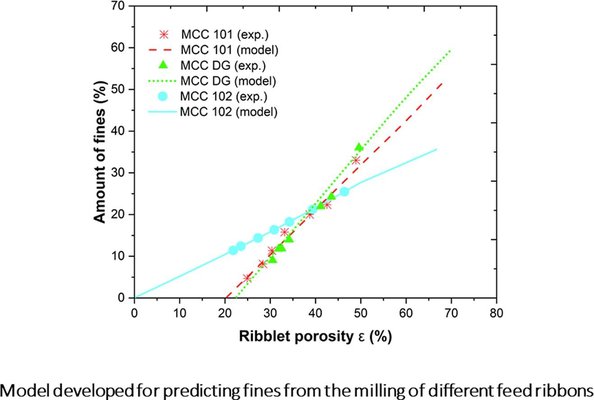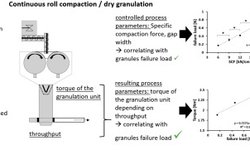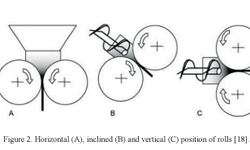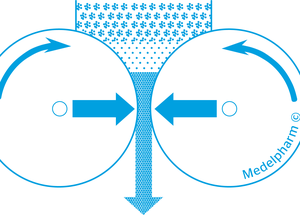Scientific papers
Dry granulation is a widely employed technique in the pharmaceutical industry for compacting heat and moisture-sensitive feed materials into compacts, followed by subsequent milling. While Population Balance Models (PBMs) are commonly used to investigate the effects of milling conditions on the Granule Size Distribution (GSD), there has been limited exploration of the impact of feed material and ribbon properties on the resulting GSD. In this study, various feed materials and ribbons with distinct mechanical properties were utilized to validate a mass-based bi-modal breakage function, previously developed in a study by Olaleye et al. (2019).
Tablets resembling ribbons, referred to as "ribblets," with precisely controlled porosities, were produced using an Instron machine and pharmaceutical excipients, including microcrystalline cellulose MCC 101, MCC DG, and a DCPA/MCC mixture. Roll-compacted ribbons were also generated using MCC 102 and MCC DG excipients. Subsequently, the ribblets and ribbons underwent milling in an impact-dominated cutting mill, and PBM parameters were derived from the milling data. Mechanistic models related to the feed ribbon property were developed.
The study revealed that the PBM with the mass-based bi-modal breakage function accurately predicts the GSDs of both milled ribblets and roll-compacted ribbons. Importantly, the developed model was successfully linked to ribbon properties, such as porosity, for the first time. The model parameter 'a,' reflecting the fines mode in the bi-modal breakage function, exhibited a linear increase with ribblet porosity. This work showcases the versatility of the developed PBM and offers a systematic approach to describing the ribbon milling process.

Comments
No comments posted yet.
Add a comment















